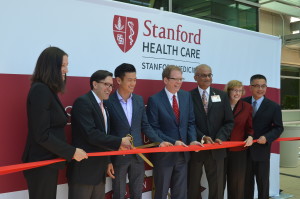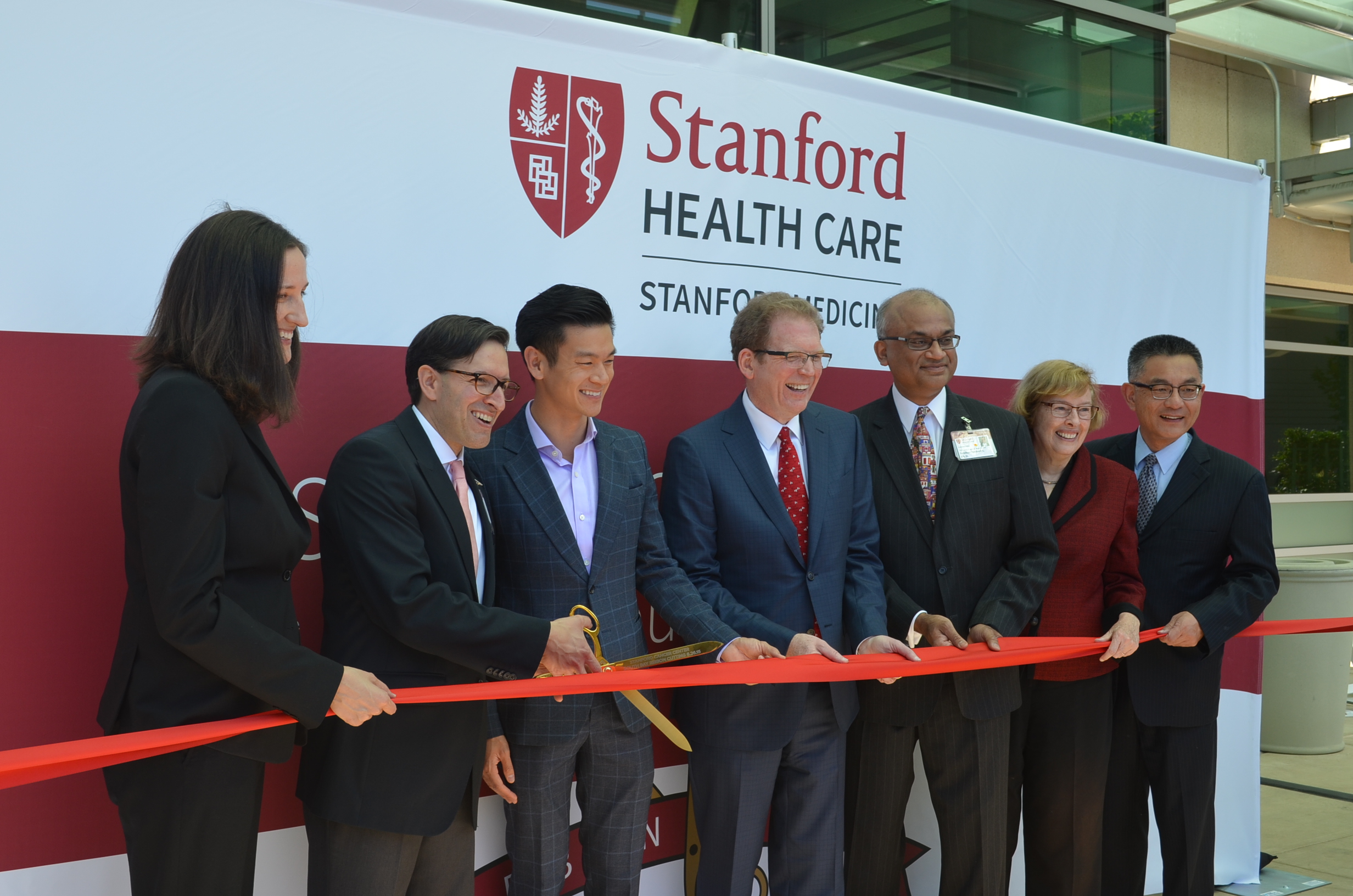
On Friday, June 26, Stanford Health Care held a ribbon-cutting ceremony for its new South Bay Cancer Center in San Jose. Over 250 physicians, Stanford employees and community members attended the event, which included speeches and a tour of the building.
According to Gay Crawford, chair of the Patient and Family Advisory Council for the new center, the idea for the center was inspired by a conversation with a stranger. Crawford explained that, while at church one day, a woman approached Dave Henderson, CEO of Samaritan Medical Center.
“She said, ‘You build buildings. We need a cancer center here,’” Crawford said. “‘There are breast cancer patients who are having J-wires inserted one place, putting a paper cup over their breast, driving across town to another location. We need one place for all cancer treatments.’”
That was in 2009. Crawford, a two-time cancer patient and founder of medical non-profit Hospice in the Valley, worked with Henderson and conducted focus groups to find out exactly what patients needed and how the hospital could help them. Eventually, the four-story 70,000-square-foot building was created.
However, with the major, unanswered question of who would run the facility, the building remained vacant for two years after its construction. In January 2013, Stanford Medicine announced that they would lease the entire building, redesigning some features to better suit their goals and creating a Patient and Family Advisory Council with Crawford as chair. Now, two and a half years later, the South Bay Cancer Center is complete.
Stanford Medicine has long been a leader in cancer treatment, having developed the tumor board, CyberKnife and other cancer breakthroughs. Now, they are bringing that innovation to patient care, with a focus on efficiency and comfort. Patient feedback is used to determine everything from the chairs they choose to the employees they hire.
Amir Dan Rubin, president and CEO of Stanford Health Care, described the new facility’s goal: providing the best cancer care and coordination care to South Bay residents. Above all, the new center aims to promote positive patient experiences.
“The most important patient is the one who comes through these doors,” Rubin said to the crowd before the ribbon cutting.
To streamline the patient process, the center has also implemented universal registration from any floor through portable Versus RTLS badges for patients and employees. In most other healthcare settings, when patients have multiple appointments, they must check in to each appointment separately. With universal registration, patients only need to register one time and can then use the clip-on RTLS to navigate themselves to waiting rooms instead of re-registering.
Using the badges, Stanford employees will also be able to check a patient’s whereabouts — they can easily see where patients are, what their status is and how long they have been waiting. If patients are not comfortable with the service, they can choose to opt out of the badges.
According to Kate Surman MBA ’04, administrative director of the center, this is the first time Stanford is using the badges and the first time the badges have been designed for cross-department use.
“[The facility] is state-of-the-art in every respect: the design, the layout, the equipment – but most importantly, the compassion and commitment to care,” said Lloyd B. Minor, dean of the School of Medicine.
The new center will also provide the opportunity for clinical trials. Beverly Mitchell, director of the Stanford Cancer Institute, explained that the facility will be running cancer clinical trials in order to provide patients with the best possible treatment.
“Even though there have been incredible scientific advances over the past few years, we need to do better,” Mitchell said.
With the increasing popularity of patient-focused care in hospitals in the last decade, Crawford spoke about other ways that the center has been designed with patients in mind.
Departments that are often used together are located nearby one another. For example, patients typically go to the lab first, then have a clinic appointment with their physician and finally go to the Infusion Center, where the staff administer medication intravenously. In the past, these three steps could be located in separate buildings, but on the fourth floor of the center, they are only separated by a hallway.
The council also requested a café and library while Crawford herself specifically heard feedback to put Infusion on the fourth floor so patients could look out into the Los Gatos Hills. Henderson, who Crawford referred to as their “landlord,” added that the focus groups put the community’s thumbprints all over the building, literally.
“[Henderson] had the idea to put [their] thumbprint[s] on a posterboard,” Crawford said. “It’s a really wonderful graphic to show how the community cares about this building.”
Katie Abbott, the center’s senior program manager for Business Operations, said that the industry is still shifting to understand the partnership between the staff and the patients and family.
“The biggest learning for me is having our patients and family involved in our interviews,” Abbott said. “Each time, I learned something different about how we pick the right thing for our team.”
“The building was designed with the patient journey in mind,” she added.
Contact Alina Abidi at alinafabidi ‘at’ gmail.com.
